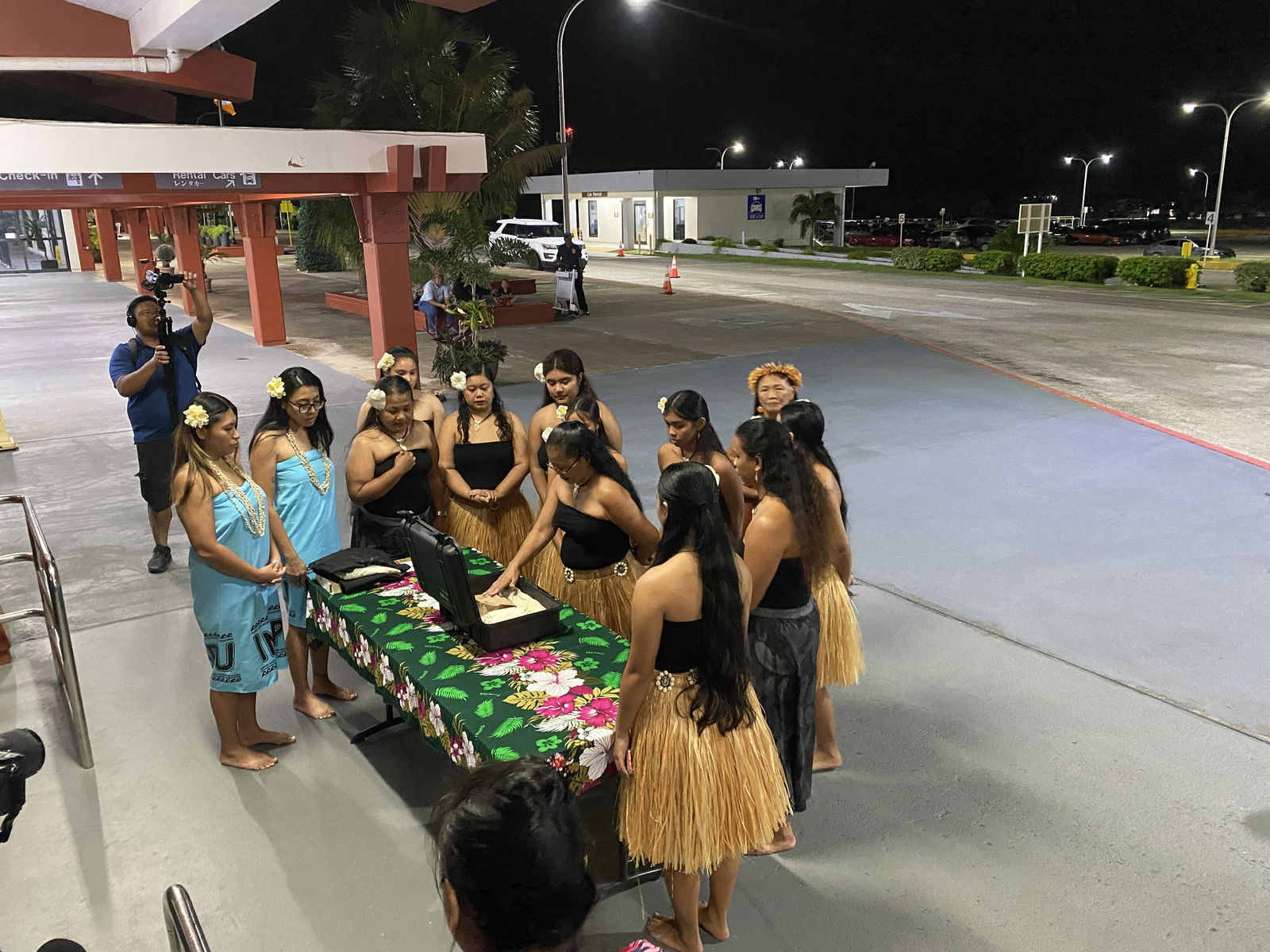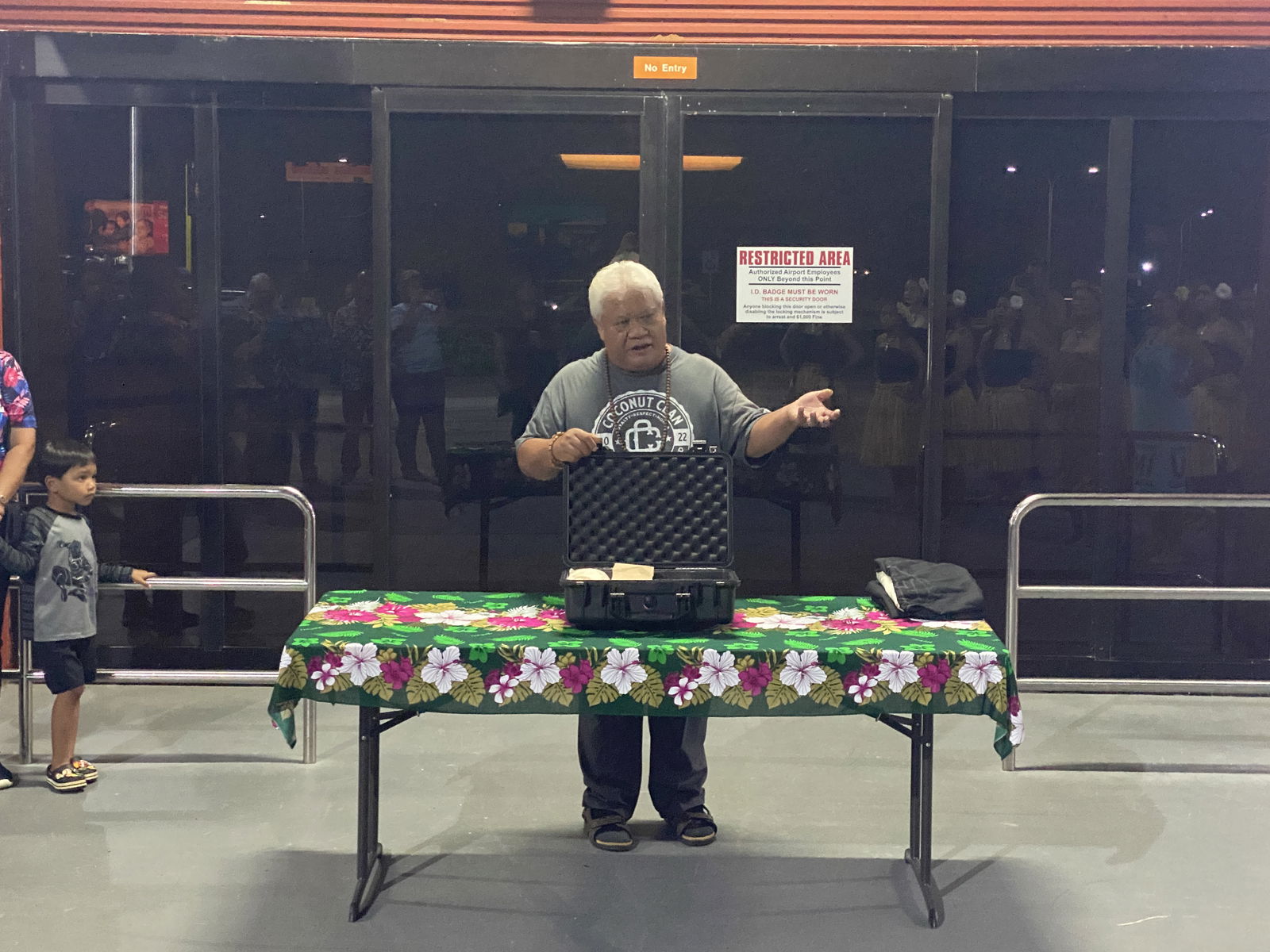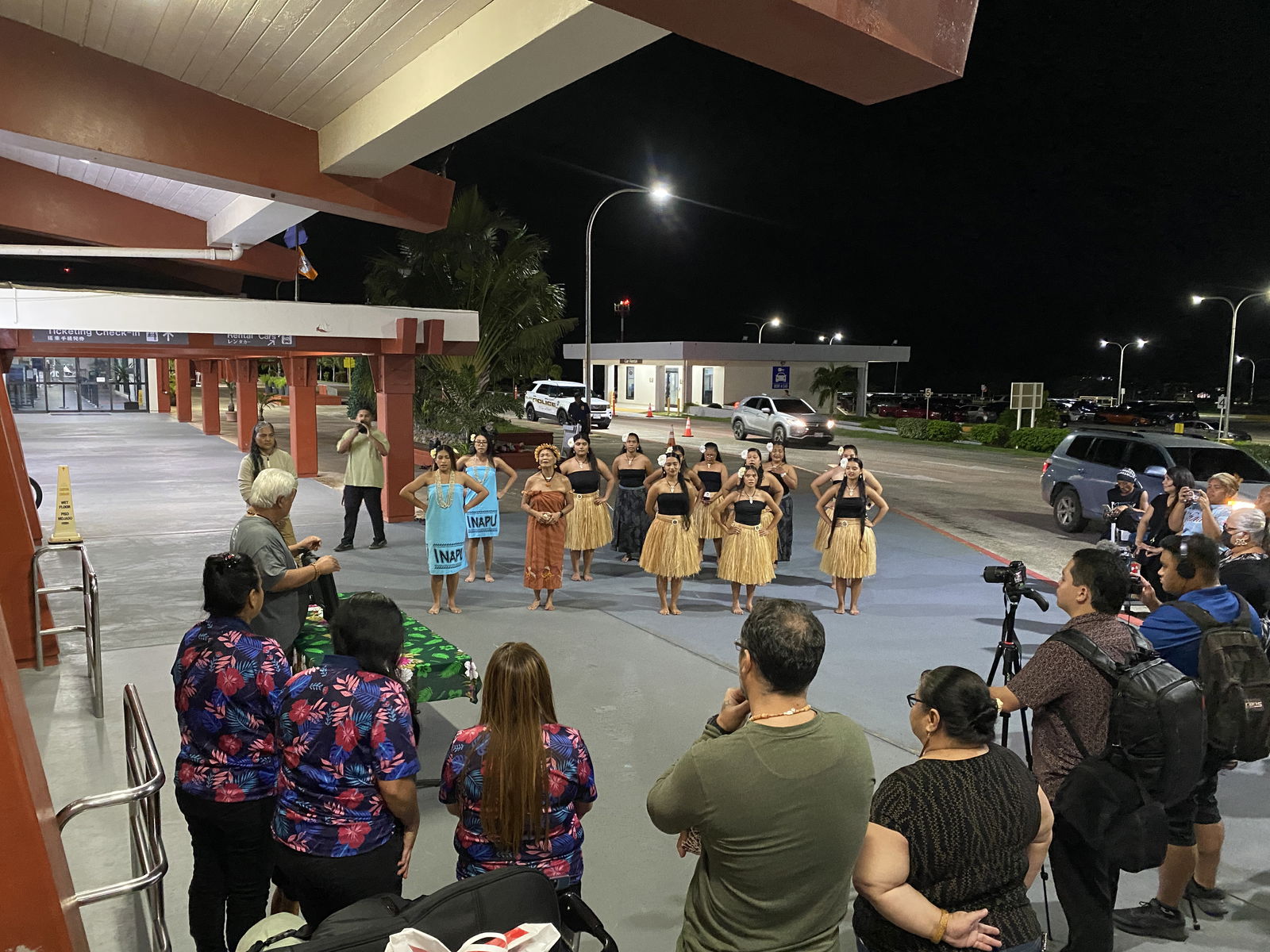LEONARD Leon, the director of the NMI Museum of History and Culture, arrived on Saipan on Tuesday evening, Nov. 19, with ancestral remains that had been stored in California since 1981.
In October, Leon told Variety that he would be attending the Association of Tribal Archives, Libraries, and Museums Conference in Palm Springs, California. He said that while he was there, he would also travel to the nearby UC Riverside’s Native American Graves Protection and Repatriation Act program facility to repatriate human remains that were originally unearthed from two sites on Saipan — San Antonio and Marpi — and one on Tinian. They were submitted to UC Riverside for radiocarbon analysis by the University of Hawaii at Manoa’s Archaeology Department in 1981.
Leon and the NMI museum had worked out an agreement with UC Riverside to allow for the repatriation of the human remains.
At the Saipan airport on Tuesday evening, the repatriation of the remains was welcomed by a local cultural dance group and members of the community.
Local healer Donald Mendiola was also on hand to provide a Chamorro blessing for the ancestral remains.
Several members of the public were likewise allowed to honor the remains.
Leon told the media that the remains will be stored in the NMI Museum but would ultimately be returned somewhere near where they were originally found.
He said he has had “promising” conversations with the Department of Public Lands regarding the acquisition of land for burial sites.
Leon said no DNA tests were conducted on the bones, so he could not confirm their genetic origin. However, he said the remains in San Antonio were located south of Pakpak Beach, a known ancestral Chamorro mass burial site. Also, the Tinian remains were located near Guma Taga, another known mass ancestral Chamorro burial site. As for the remains found in the Grotto area in Marpi, Leon noted that the site was a battlefield during World War II.
He said in other jurisdictions, some agencies have created small mausoleums in order to reinter ancestral remains.
“We would like to consult with the indigenous groups and look at case studies in Hawaii and Guam,” Leon said. “Guam [Historic Preservation Office] buried [the remains] directly into the ground and they don’t have any manmade structures or modern structures to serve as a coffin. They tried to do it as traditional as [possible]. There’s that option.”
He said funding could be pursued to create a memorial space for all the remains that the NMI Museum has in its possession.
The goal, he added, is to “establish a space where it’s not just going to be a burial site but it can be a memorial [as well]. That’s where my mind is leaning towards in terms of funding.”
Leon said it is a “human right” to be “put to rest.”
In California, “a room full of 1,700 Native American tribe members were screaming and cheering for the NMI Museum’s accomplishment to be able to repatriate their ancestors,” he said. “I think it is more than just an indigenous right, it is a human right. We’re now walking in human rights areas, where ancestors or any human remains need to be put to rest. If it can be in their homeland, that would be preferred. The way the ancestral remains throughout history were removed from their land — I think the right thing to do is return them to where they belong.”

Cultural dancers from Tinian and Saipan honor the ancestral remains found on both islands.

Leonard Leon, the director of the NMI Museum of History and Culture, arrived on Saipan on Tuesday, Nov. 19 with ancestral remains that had been stored in California since 1981.

Yo’amte/Suruhuanu Donald Mendiola chants over the ancestral remains.

Community members gather at the Francisco C. Ada/Saipan International Airport to witness the return of ancestral remains found on Saipan and Tinian in 1981.











